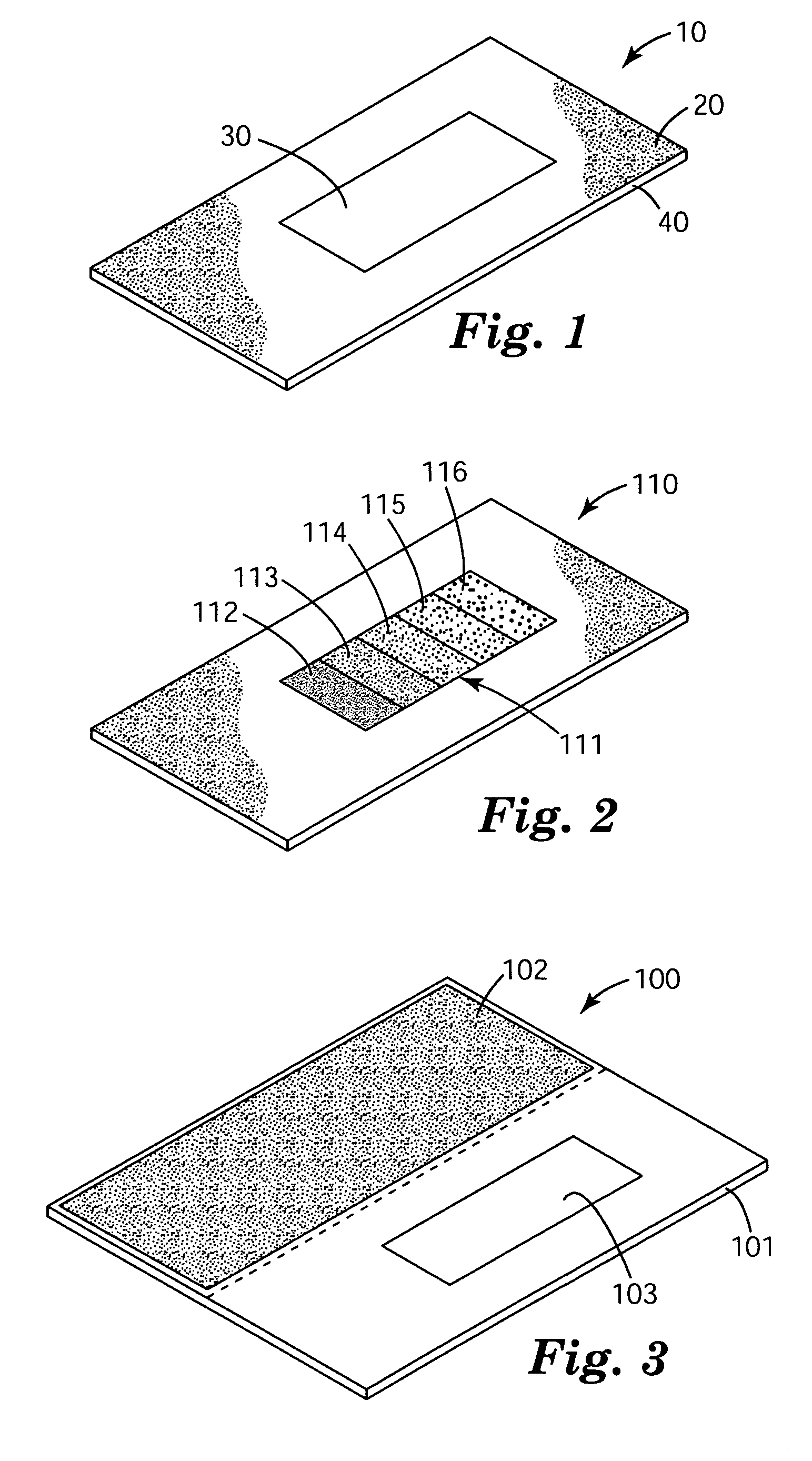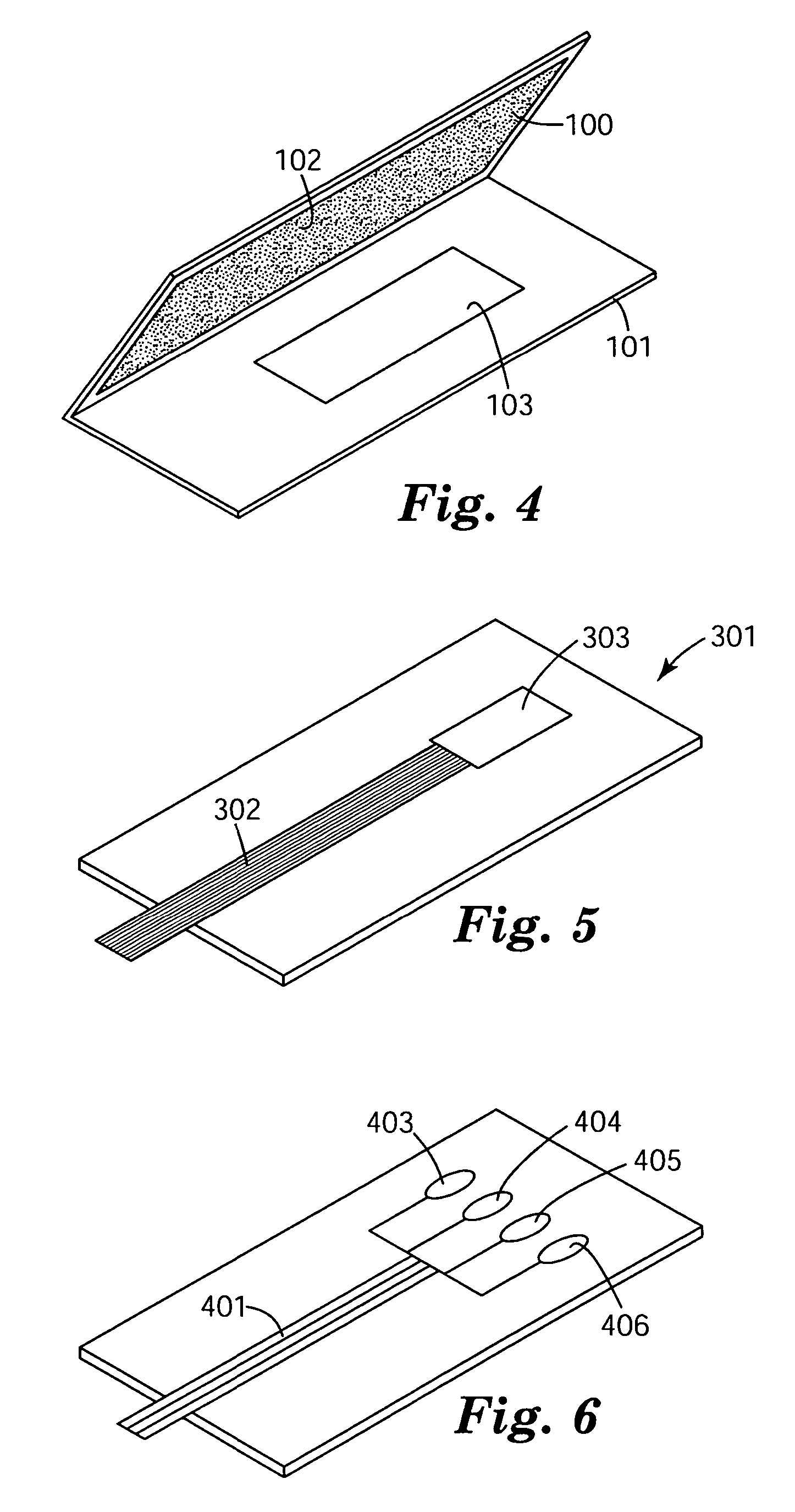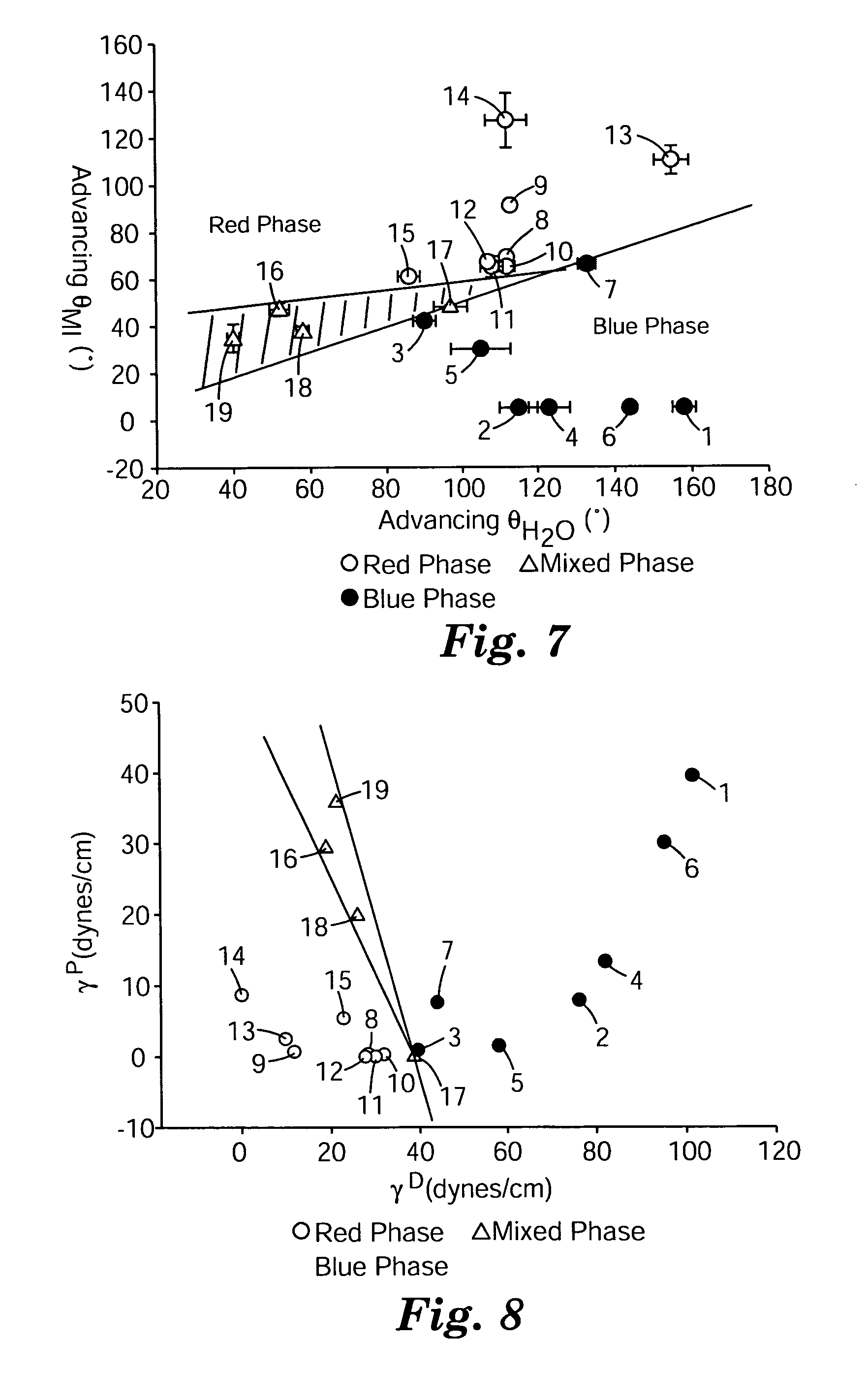Colorimetric sensors constructed of diacetylene materials
a technology of diacetylene and colorimetric sensors, which is applied in the field of colorimetric sensors constructed of diacetylene materials, can solve the problems of insufficient color change of polydiacetylene membranes, complex and difficult synthesis of receptors and polydiacetylene membranes, etc., and achieves the effects of convenient transportation, less complex, and more accura
- Summary
- Abstract
- Description
- Claims
- Application Information
AI Technical Summary
Benefits of technology
Problems solved by technology
Method used
Image
Examples
example 1
Preparation of HO(O)C(CH2)3C≡C—C≡C(CH2)4O(O)C(CH2)10CH3
Step 1: Preparation of HO(CH2)4C≡C—C≡C(CH2)4O(O)C(CH2)10CH3
[0128]In a glass reaction vessel, 600 milligrams of 5,7-dodecadiyn-1,12-diol (HO(CH2)4C≡C—C≡C(CH2)4OH), 0.275 milliliters of pyridine and 10 milliliters of THF were mixed. To this solution was added 676 milligrams of lauroyl chloride and the resulting mixture was stirred for 15 hours. The mixture was then diluted with diethyl ether and washed with 0.1 N HCl and brine. The organic layer was separated, dried over MgSO4, filtered and the solvent was removed to yield a white solid. The solid was purified over silica gel (gradient from 25% to 50% by volume ethyl acetate in hexanes) to yield 570 milligrams of HO(CH2)4C≡C—C≡C(CH2)4O(O)C(CH2)10CH3 as a white solid.
Step 2: Preparation of HO(O)C(CH2)3C≡C—C≡C(CH2)4O(O)C(CH2)10CH3
[0129]In a glass reaction vessel, 377 milligrams of HO(CH2)4C≡C—C≡C(CH2)4O(O)C(CH2)10CH3 prepared in Step 1 was dissolved in 3 milliliters of DMF and 1....
examples 2-5
Preparation of HO(O)C(CH2)a-1C≡C—C≡C(CH2)aO(O)C(CH2)bCH3
[0130]The same procedure described in Example 1 was followed using the diol and acid chloride in Step 1 shown in Table 2 to give the compounds with the general structure HO(O)C(CH2)a-1C≡C—C≡C(CH2)aO(O)C(CH2)bCH3 (a and b are defined in Table 2).
[0131]
TABLE 2ExampleDiol, a valueAcid Chloride, b value2HO(CH2)3C≡C—C≡C(CH2)3OH,CH3(CH2)14C(O)Cl,a = 3b = 143HO(CH2)4C≡C—C≡C(CH2)4OH,CH3(CH2)12C(O)Cl,a = 4b = 124HO(CH2)4C≡C—C≡C(CH2)4OH,CH3(CH2)14C(O)Cl,a = 4b = 145HO(CH2)4C≡C—C≡C(CH2)4OH,CH3(CH2)16C(O)Cl,a = 4b = 16
example 6
Preparation of HO(O)C(CH2)2C(O)O(CH2)4C≡C—C≡C(CH2)4O(O)C(CH2)12CH3
Step 1: Preparation of HO(CH2)4C≡C—C≡C(CH2)4O(O)C(CH2)12CH3
[0132]In a glass reaction vessel, 4.99 grams of 5,7-dodecadiyn-1,12-diol (HO(CH2)4C≡C—C≡C(CH2)4OH), 2.2. grams of pyridine and 50 milliliters of THF were mixed. To this solution was added 6.34 grams of myristol chloride and the resulting mixture was stirred for 15 hours. The mixture was then diluted with diethyl ether and washed with 0.1 N HCl and brine. The organic layer was separated, dried over MgSO4, filtered and the solvent was removed to yield a white solid. The solid was purified over silica gel (15% by volume of ethyl acetate in dichloromethane to 100% theyl acetate gradient) to yield 5.0 grams of HO(CH2)4C≡C—C≡C(CH2)4O(O)C(CH2)12CH3 as a white solid.
Step 2: Preparation of HO(O)C(CH2)2C(O)O(CH2)4C≡C—C≡C(CH2)4O(O)C(CH2)12CH3
[0133]In a sealable tube, 1.41 grams of HO(CH2)3C≡C—C≡C(CH2)4O(O)C(CH2)12CH3 prepared in Step 1, 0.435 grams of succinic anhydri...
PUM
| Property | Measurement | Unit |
|---|---|---|
| contact angle | aaaaa | aaaaa |
| temperature | aaaaa | aaaaa |
| temperature | aaaaa | aaaaa |
Abstract
Description
Claims
Application Information
 Login to View More
Login to View More - R&D
- Intellectual Property
- Life Sciences
- Materials
- Tech Scout
- Unparalleled Data Quality
- Higher Quality Content
- 60% Fewer Hallucinations
Browse by: Latest US Patents, China's latest patents, Technical Efficacy Thesaurus, Application Domain, Technology Topic, Popular Technical Reports.
© 2025 PatSnap. All rights reserved.Legal|Privacy policy|Modern Slavery Act Transparency Statement|Sitemap|About US| Contact US: help@patsnap.com



